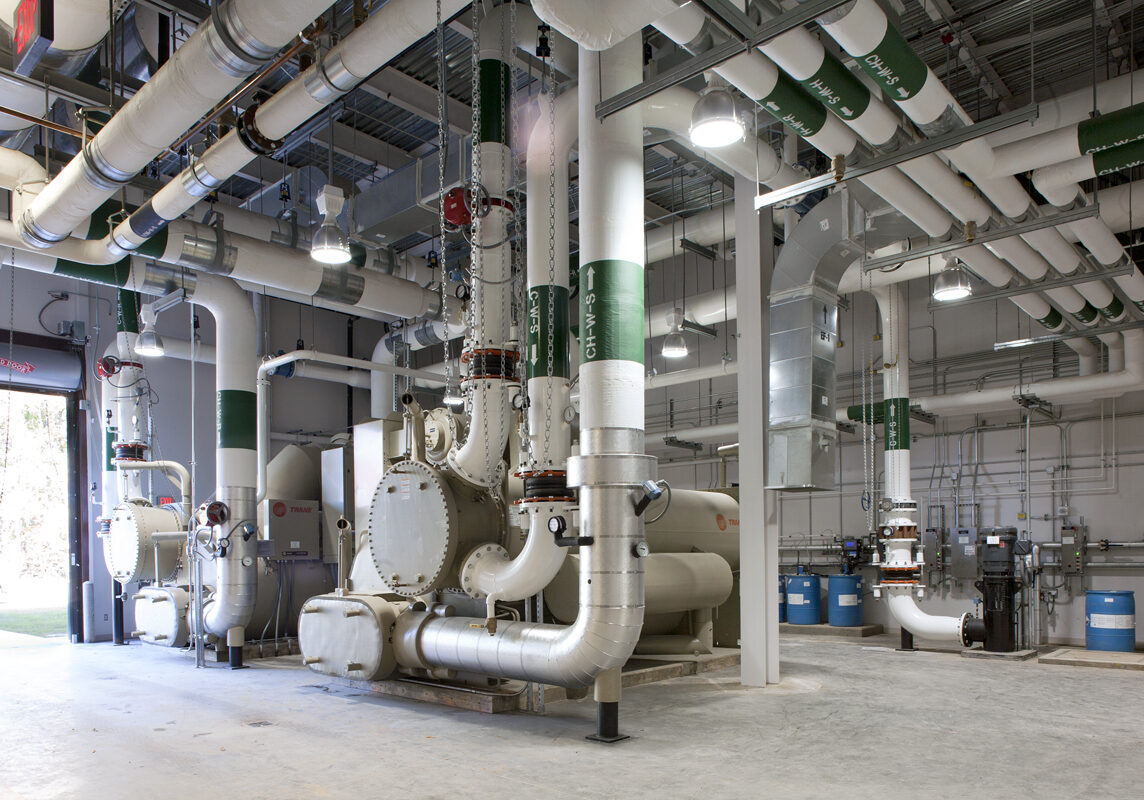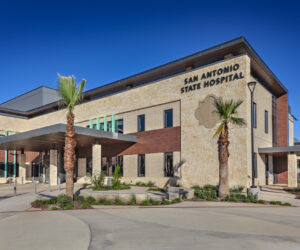Central Utility Plant
Texas A&M University – Texarkana

The thermal utility plant at the Texas A&M University, Texarkana campus was built along with a Multipurpose Library, the second building on the campus. The plant consists of two 900 – ton centrifugal water chillers, two concrete structure cooling towers, and two 250 – horsepower heating water boilers. The plant is designed for future expansion along with the growing campus to an eventual firm capacity of 3,600 tons cooling and 36 MMBtu/hr heating.
The plant is designed to achieve optimal efficiency especially during part load conditions. Variable primary flow hydraulic configurations reduce the required pump energy consumption to the minimum amount needed for part load operation of the chilled water and heating water systems. The variable frequency drive chillers combined with variable frequency drive cooling tower fans and variable condenser water flow system enable the plant to minimize the required energy consumption at periods of reduced load, reduced wet bulb, or both.
In order to serve the ever present reheat load of the campus science building most efficiently a heat pump was considered. Although funding for the heat pump was not available, the plant layout and piping configuration is designed so that the heat pump can be added in the future. The heat pump would carry the heating load during the summer and could operate in parallel with boilers for part of the year.
Maintainability as well as energy efficiency is at the forefront of the design of the plant. The specified equipment is selected for long life and superior maintainability. The concrete structure of the counterflow cooling tower is expected to endure for the useful life of the plant, and the configuration cooling tower components allows access to components for maintenance and replacement. Creativity is exercised in the cooling tower sump design to allow any condenser water pump to operate with any cooling tower, but the design also allows some basins to be drained for cleaning while the other towers remain operational without the use of mechanical sluice gates.
The cooling tower is built as part of the central plant to appear as a single attractive structure rather than a utility plant.
Site Owner
Texas A&M University – Texarkana
Location
Project Cost
$9,240,000
Project Completion
2010
Expertise
Central Plant
CUP & Infrastructure
Higher Education
Services
Electrical Engineering
Mechanical Engineering
Plumbing Engineering



